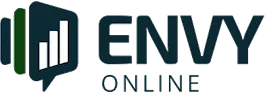Essential WordPress Trends for Agencies in 2025
In 2025, WordPress continues to evolve, adapting to the ever-changing digital landscape. Agencies must stay ahead of the curve by embracing new trends that enhance their offerings. As the digital realm becomes more competitive, agencies leveraging the latest WordPress trends can distinguish themselves and offer unparalleled services to their clients.
AI and Machine Learning Integration
The integration of AI and machine learning is set to revolutionise WordPress development. Agencies can leverage AI for personalised user experiences, predicting user behaviour through data analysis. This integration not only streamlines operations but also opens new avenues for creativity and innovation. Boost Local Visibility: Simple SEO Tips You Need
For instance, AI-driven content personalisation allows agencies to tailor content based on user preferences. This not only enhances user engagement but also optimises conversion rates. By analysing user interactions and preferences, AI can suggest content adjustments to keep users engaged longer.
Moreover, chatbots and virtual assistants powered by AI can improve customer service, offering 24/7 support without the need for constant human intervention. A case study involving an agency that implemented AI chatbots revealed a 40% reduction in response time and a significant increase in customer satisfaction.

Headless WordPress Architecture
Headless WordPress is gaining traction as it offers greater flexibility and speed. By decoupling the front end from the back end, agencies can deliver faster and more dynamic websites. This separation allows for more innovative design and user interaction possibilities, which are essential enabling agencies to create highly interactive user interfaces. This trend is particularly beneficial for agencies looking to create unique digital experiences. For example, an agency could use React to develop a real-time data visualization dashboard, enhancing user engagement through interactive content.
In a case study, a UK-based agency implemented a headless WordPress solution for an e-commerce client, reducing page load times by 50% and increasing CTR by 30%. This demonstrates the substantial benefits of adopting a headless architecture, with tangible improvements in both user experience and business metrics. Your Site Mobile-Friendly? Here’s How to Make Sure
Enhanced Security Measures
With cyber threats on the rise, agencies must prioritise security in their WordPress projects. Enhanced security measures are not just a trend but a necessity. This includes adopting advanced encryption techniques and multi-factor authentication, ensuring that client data remains secure.
Implementing SSL certificates, regular security audits, and robust firewall protections are some of the essential practices. Agencies should also educate clients about the importance of maintaining updated plugins and themes to mitigate vulnerabilities. A survey by Cybersecurity Ventures predicts that global cybercrime costs will grow by 15% per year, reaching $10.5 trillion annually by 2025, highlighting the urgency of implementing strong security measures.
Security is not a product, but a process. — Bruce Schneier
Focus on Accessibility
Accessibility is becoming increasingly crucial, with regulations demanding websites to be inclusive. Agencies must ensure their WordPress sites are accessible to all users, including those with disabilities. This not only fulfills legal requirements but also reflects a commitment to social responsibility and inclusion.
Implementing ARIA labels, ensuring keyboard navigability, and providing alt text for images are vital steps. Agencies can use tools like WAVE and Lighthouse to audit and improve website accessibility. By focusing on accessibility, agencies not only comply with regulations but also expand their reach to a broader audience. According to a report by the World Health Organisation, over 1 billion people, or about 15% of the world’s population, live with some form of disability, underlining the importance of accessibility. How Smart Branding Can Skyrocket Your Business Success
Rise of Progressive Web Apps (PWAs)
Progressive Web Apps (PWAs) are gaining popularity due to their ability to deliver app-like experiences on the web. For agencies, integrating PWAs with WordPress sites can significantly enhance user engagement. The ability to function offline and provide a seamless experience across devices is a major advantage in the mobile-first world.
PWAs offer offline capabilities, faster loading times, and push notifications. Agencies can leverage these features to provide seamless user experiences across different devices. A study by Google found that PWAs could improve loading speeds by up to 63%, leading to better user retention and satisfaction.
Incorporating PWAs into WordPress projects can be a game-changer, especially for clients in the e-commerce and publishing industries. By bridging the gap between web and native apps, PWAs offer a flexible and cost-effective solution for agencies looking to innovate.
Benefits of PWAs
- Improved performance and speed
- Increased user engagement
- Enhanced cross-platform compatibility
Serverless Architecture Adoption
Serverless architecture is another trend that’s shaping the future of WordPress. By utilising serverless platforms, agencies can build scalable and cost-effective websites. This approach fosters agility and allows developers to focus on crafting superior digital experiences rather than managing infrastructure.
This approach eliminates the need for server management, allowing developers to focus on writing code. Services like AWS Lambda and Google Cloud Functions can be integrated with WordPress to handle heavy workloads efficiently. For agencies, this means reduced operational costs and the ability to scale resources dynamically based on demand.
Advantages of Serverless Architecture
Agencies adopting this architecture benefit from cost savings, enhanced scalability, and improved performance. The pay-as-you-go model ensures that resources are only utilised as needed, making it an economically viable option. As digital operations become more complex, the flexibility and efficiency offered by serverless architecture provide a competitive edge.
| Feature | Benefit |
|---|---|
| Scalability | Automatic scaling with demand |
| Cost-efficiency | Pay only for used resources |
| Flexibility | Focus on code, not infrastructure |
Conclusion: Preparing for the Future
The WordPress trends for agencies in 2025 highlight the need for innovation and adaptation. By embracing AI, PWAs, and enhanced security measures, agencies can deliver superior digital experiences. The continuous evolution of technology requires agencies to be proactive and forward-thinking.
Finally, focusing on accessibility and serverless architecture ensures that agencies remain competitive, providing scalable and inclusive solutions. Are you ready to adapt to these trends and transform your agency’s offerings? The future of WordPress is promising, and those who embrace these essential trends will lead the way in digital excellence.


